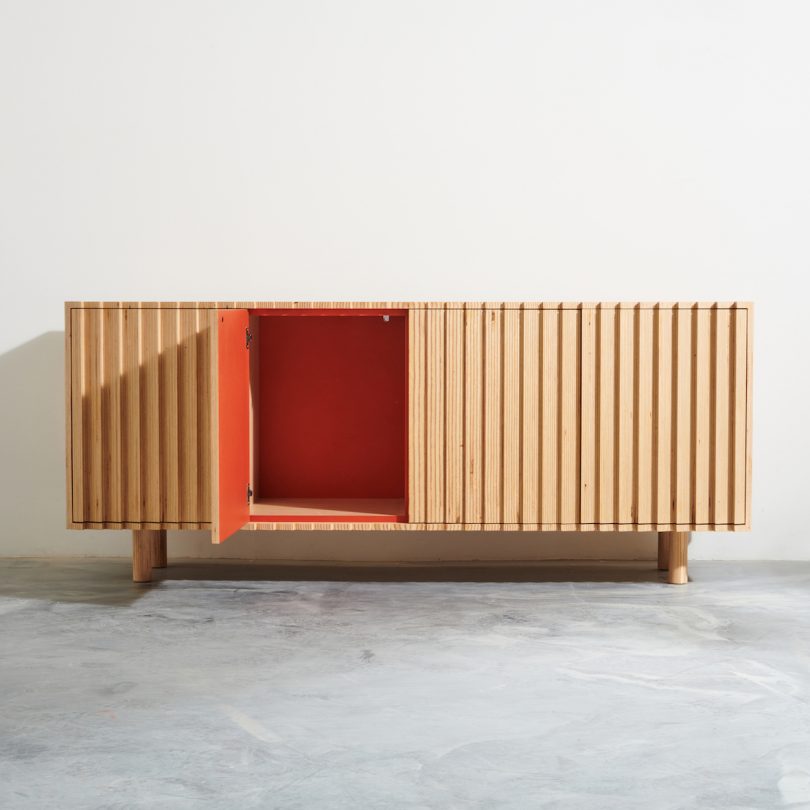Timbur Furniture Designers Create New Signature Stack Lamination Furniture Collection
Timbur, founded by Ezra and Ania Ardolino, are a digital fabrication company using advanced software and other processes such as 7-axis robotic machining, CNC manufacturing, and 3D machine milling to create large-scale designs for household, architecture, and major design industries.

Expanding upon their original Stack collection with new furniture and accessories, they’ve created sculptural consoles, tabletop decor, benches and seating. The collection is named after their signature stack lamination process.

The stack lamination process requires sheets of raw Baltic birch plywood to be stack laminated to create a large volume of material. These blocks are CNC machined using CAD and CAM programs into the distinct shape of the final design. Next, they are 3D machined, assembled, and finally finished.
Timbur uses 7-axis robotic machining and 3-axis CNC machining. CNC stands for “Computerized Numerical Control. It is a computerized manufacturing process in which pre-programmed software and code controls the movement of production equipment.” Whereas, 3D machining or 3D milling machining is the process of “using computers to control the creation of complex parts from raw materials.”
*Please note * This is not the same as 3D printing. 3D printing is additive, 3D machining is subtractive.

It is similar to raw plywood layering in the final result. However, they incorporate new technological processes such as 3D milling machines to create a stacked laminated design.

Its efficient and pertinent to this era, although the furniture designs themselves are similar to some traditional Scandinavian mid-century designs, their new technique lives up to the innovative ways conceived by classic mid-century modern designers during the peaks of mid-century modern design from the 1930’s into the 1960’s.
All Timbur products are made in the USA using sustainable materials.